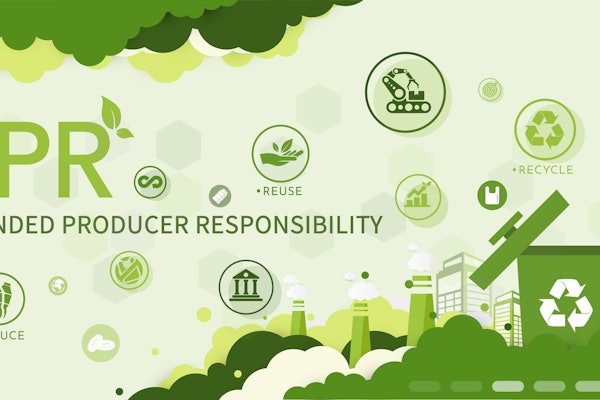One of the more notable initiatives to be announced recently is AstraZeneca's Serialized Authentication Program. It's a two-pronged effort to protect drug products with unit-level serialized tamper-evident security seals (TESS) combined with unique carton numbers (UCN).
"The pharmaceutical industry generally uses the term 'mass serialization' to describe what we're doing on each carton," says David Teale, product security director at AstraZeneca. "But we find that 'unique carton number' is easier to understand."
The new program is being used first to protect supplies of Nexium, a prescription-only gastrointestinal drug that generated $5.2 billion in sales in 2006. The serialization will be implemented on paperboard cartons containing blisterpacks holding anywhere from seven to 28 tablets. The U.S. will not be included in the mass serialization program because the U.S. market—unlike Europe, where unit-dose packaging is far more common—sends tablets in bulk containers that pharmacists count out into plastic amber vials.
The unique number that each Nexium carton carries is in a 2D bar code printed on line at the AstraZeneca plant where packaging takes place. The bar-code printing system selected by AstraZeneca is the TIPS Serialization Product tracking solution from Systech Intl.. It includes Domino Amjet printers and algorithms generated by Systech technology. RFID was evaluated, notes Teale, but ultimately rejected not only because it was too expensive and too unreliable, but also because certain privacy issues have not been resolved. In the future, RFID will fulfill its potential, adds Teale. But right now it's just not ready. 2D bar-code technology, on the other hand, is.
Second prong
The second prong of AstraZeneca's Serialization Authentication Program is a serialized TE seal from Authentix.
"Unless we seal the carton with a tamper-evident seal, all we've accomplished with the 2D bar code on the carton is authentication of the folding carton. The tamper-evident seal helps us guarantee that what's inside the carton is genuine. The seal has a hologram on it, which is an overt layer of authentication that pharmacists or hospital personnel can see. It also has hidden security features that can't be copied, including a unique 2D bar code printed in ink that is not visible to the naked eye."
Teale describes the use of serialization on both carton and TE label as a "bookend approach."
"We authenticate the pack as it leaves our manufacturing plant by uploading the unique numbers into a data base," says Teale. "If the last person to handle the pack in the supply chain can authenticate the package against the data base, we know both ends of the supply chain are secure."
And why use serialization at two levels instead of only one? Teale calls on that quintessentially British expression to answer: "Belt and braces. Besides, this is the layered approach that is universally recommended as one of the cornerstones of any anti-counterfeiting strategy." ...Read more
By Pat Reynolds, Editor, Packaging World
Anti-counterfeiting strategies begin to take shape
Several anti-counterfeiting initiatives are underway in the pharmaceutical sector, where it isn't just brand protection that's at stake but rather the very lives of people who take packaged drugs assuming the contents are genuine.
May 18, 2007
Researched List: Blister Machines for Life Sciences
Need a blister machine for life sciences packaging? Our curated list features companies serving pharmaceutical, medical device, nutraceutical, and cosmetic industries. Download to access company names, locations, machine specifications, descriptions, and more.
Download Now
List: Digitalization Companies From PACK EXPO
Looking for CPG-focused digital transformation solutions? Download our editor-curated list from PACK EXPO featuring top companies offering warehouse management, ERP, digital twin, and MES software with supply chain visibility and analytics capabilities—all tailored specifically for CPG operations.
Download Now
Downloads
















